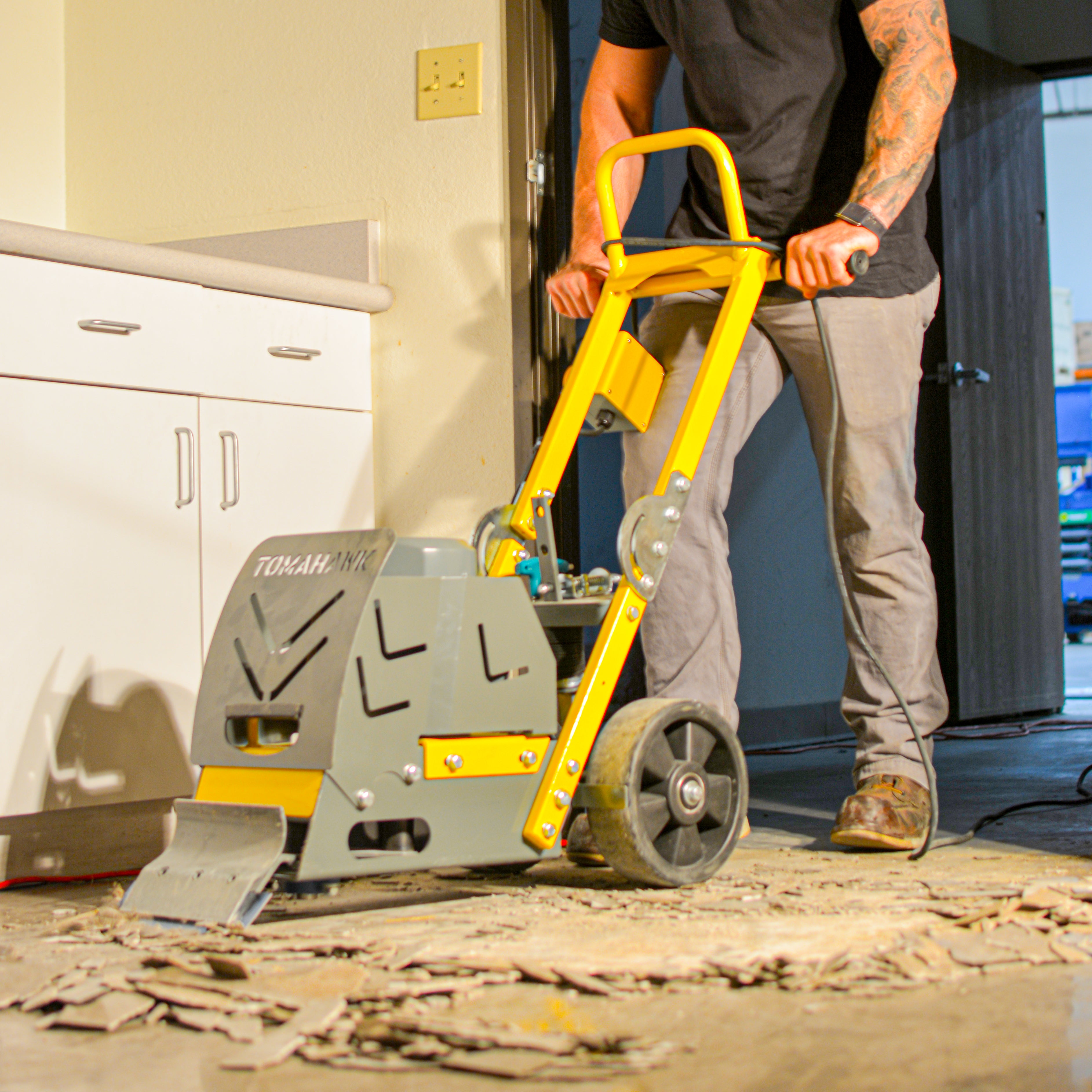Floor scrapers are versatile tools that extend their utility beyond just removing traditional flooring materials. From tiles to carpet and vinyl, floor scrapers play a pivotal role in efficiently and effectively removing a variety of flooring types. In this guide, we'll explore how floor scrapers can be used for tile, carpet, and vinyl removal, showcasing their adaptability and benefits in diverse flooring removal projects.
1. Tile Removal
Tile removal can be a challenging task, especially if the tiles are well-adhered to the subfloor. Floor scrapers offer an efficient solution for removing both ceramic and stone tiles:
-
Starting Point: Begin by removing a single tile. Use a hammer or chisel to break it, creating an opening for the scraper.
-
Angle of Attack: Hold the floor scraper at a slight angle to the floor. This helps slide the blade underneath the tile, gradually lifting it away from the subfloor.
-
Pressure Application: Apply downward pressure on the scraper while moving it forward. The pressure helps the blade penetrate the adhesive and separate the tile from the subfloor.
-
Work in Sections: Divide the area into manageable sections for systematic removal. Use the scraper to lift and remove individual tiles, making sure to clean up adhesive residue as you go.
2. Carpet Removal
Floor scrapers also excel in removing carpet and its underlying padding:
-
Starting Point: Begin by cutting a small section of the carpet near a corner or edge. Use pliers to grip the carpet and start pulling it away from the floor.
-
Exposing the Padding: As you peel back the carpet, you'll expose the underlying padding. Use the floor scraper to help lift and detach the padding from the floor.
-
Adhesive Removal: In areas where adhesive was used to secure the padding, the scraper can be employed to loosen and remove the adhesive residue.
-
Precision Removal: The scraper's sharp blade can be used to carefully cut the carpet and padding into manageable sections, facilitating disposal.
3. Vinyl Removal
Vinyl flooring removal requires the removal of both the vinyl itself and the adhesive beneath it:
-
Starting Point: Begin by removing a corner or edge of the vinyl flooring. This initial opening will allow you to insert the scraper underneath.
-
Adhesive Removal: Use the floor scraper to gently lift the vinyl flooring while simultaneously scraping away the adhesive underneath.
-
Heat Assistance: For stubborn vinyl and adhesive, using a heat gun to soften the material can make the removal process smoother. Once softened, the scraper can effectively lift the material.
-
Detailed Removal: The precision of the floor scraper's blade can help remove small sections of vinyl and adhesive, making it easier to fully clean the subfloor.
Floor scrapers are more than just tools for removing traditional flooring materials—they're versatile assets in a variety of flooring removal projects. Whether you're dealing with tiles, carpet, or vinyl, floor scrapers provide an efficient and effective means of removal. By using proper techniques, adjusting the angle of attack, and applying the right amount of pressure, you can ensure that your flooring removal projects are completed with precision and ease. With the adaptability and benefits that floor scrapers bring, you'll be equipped to tackle a wide range of flooring removal tasks with confidence.










